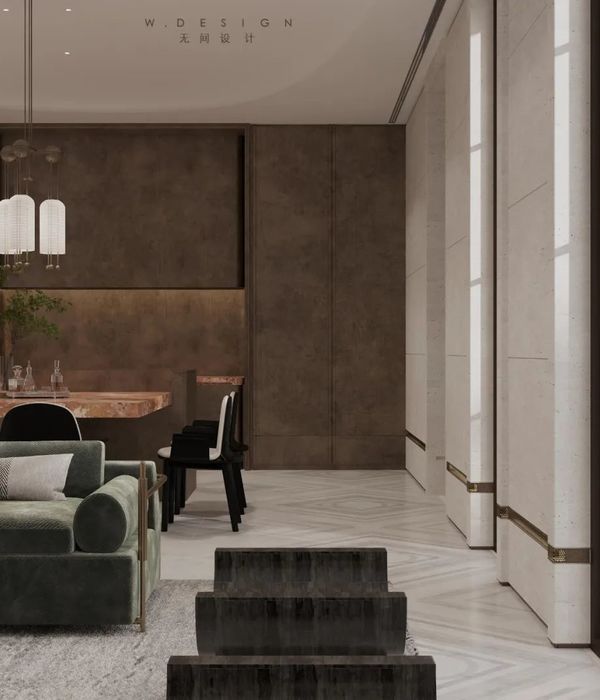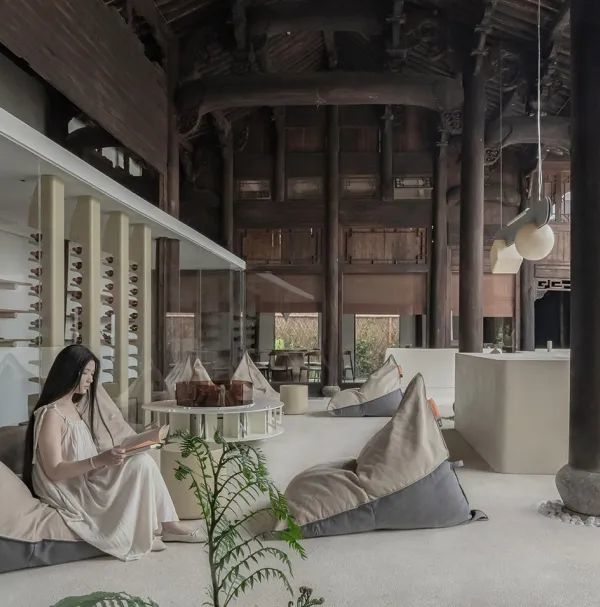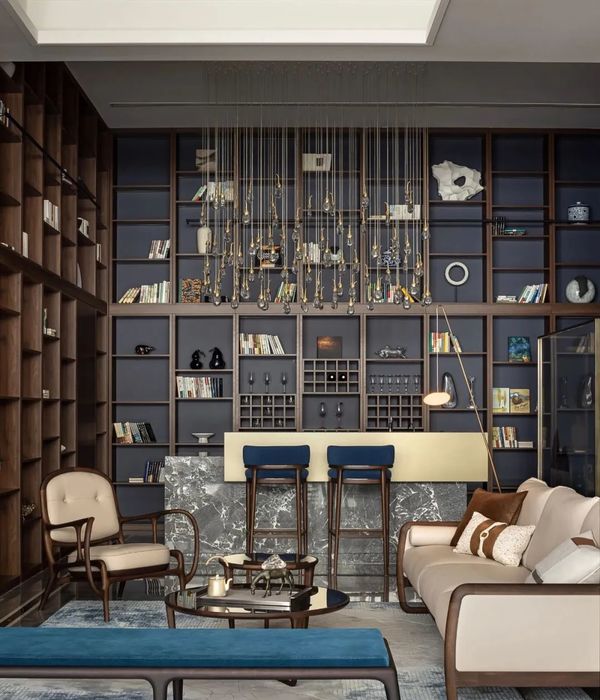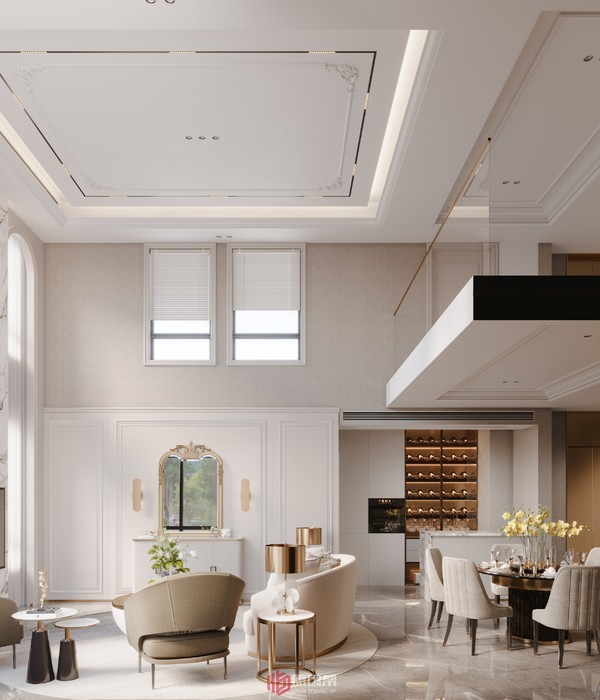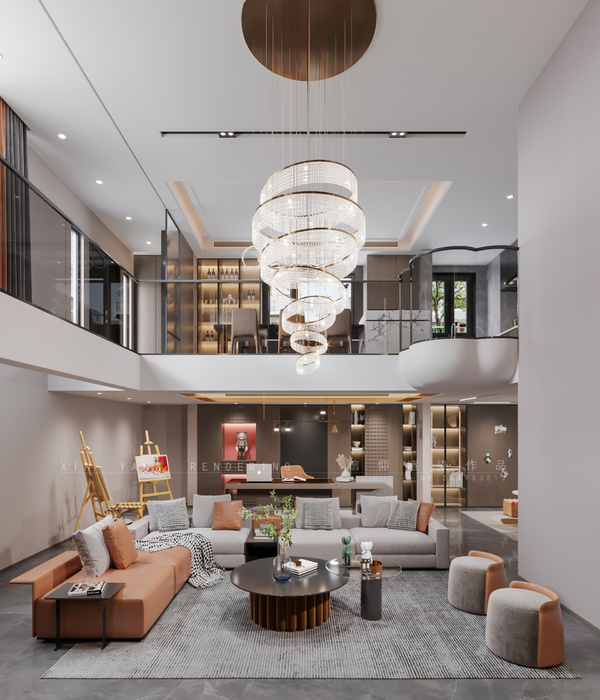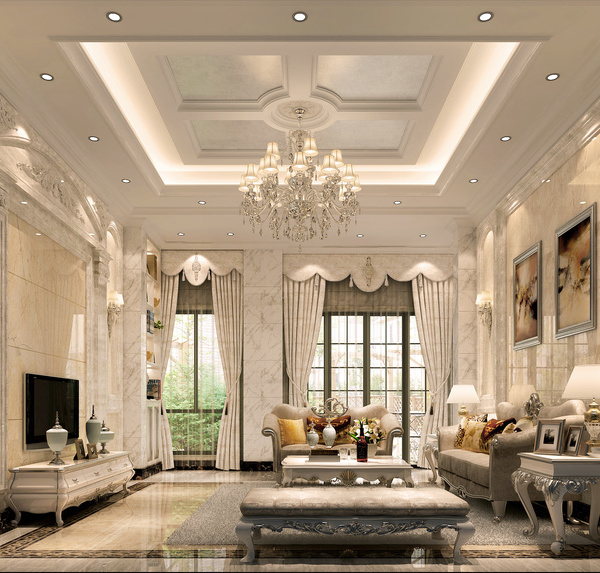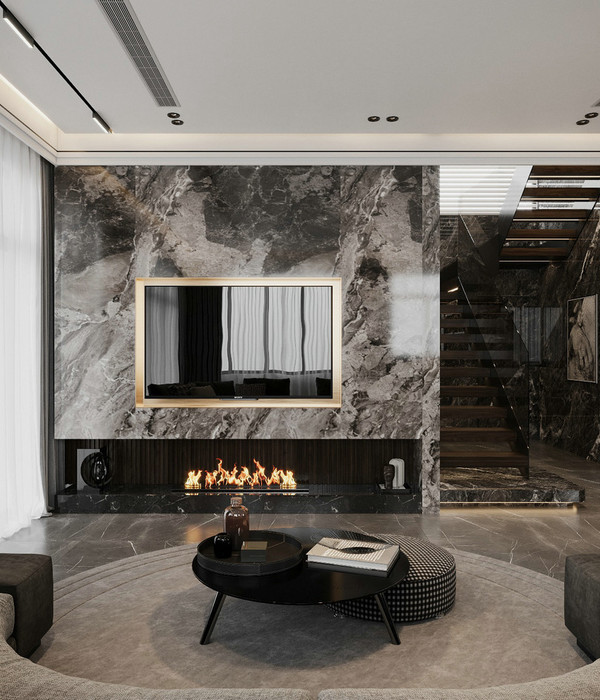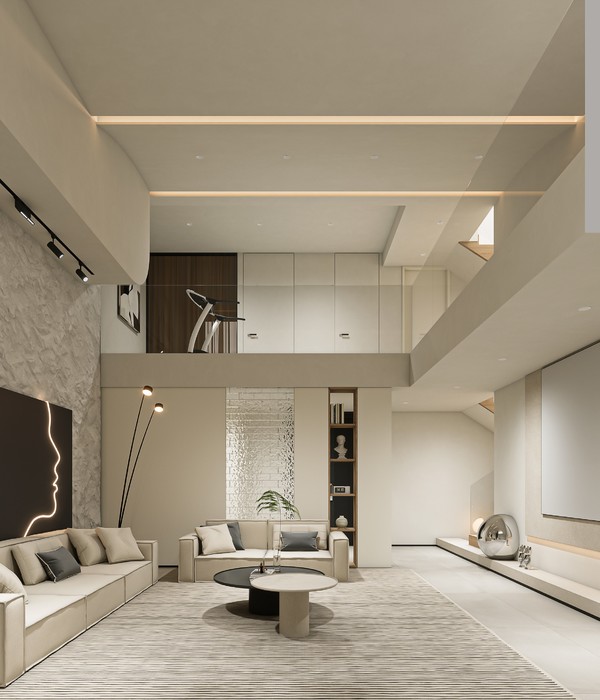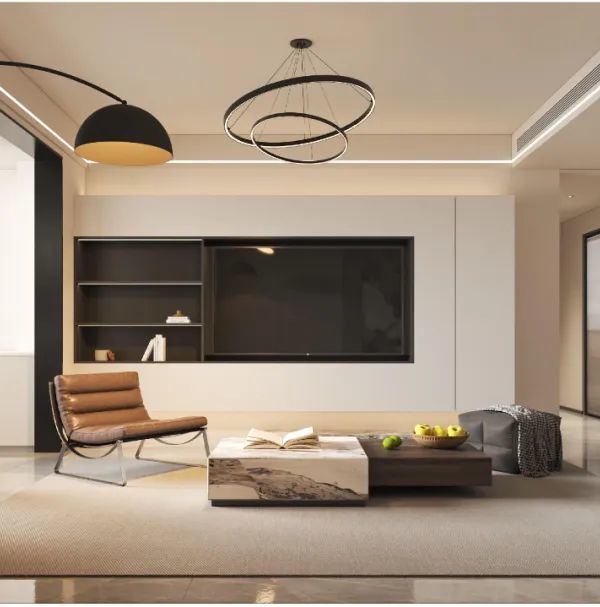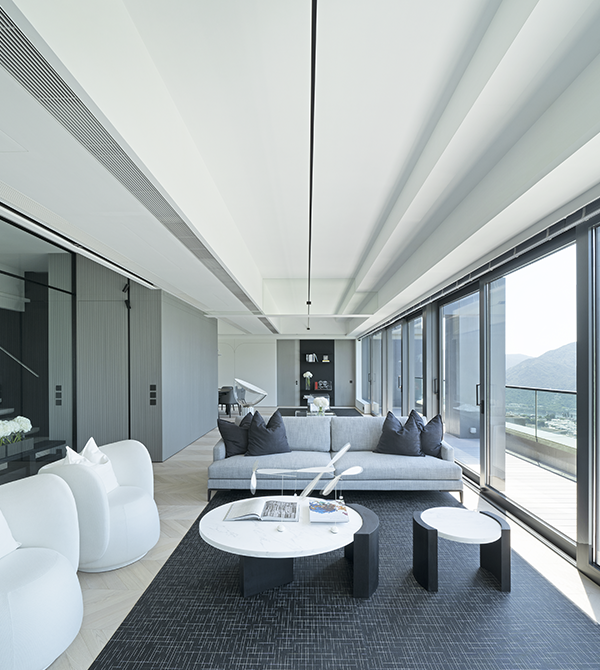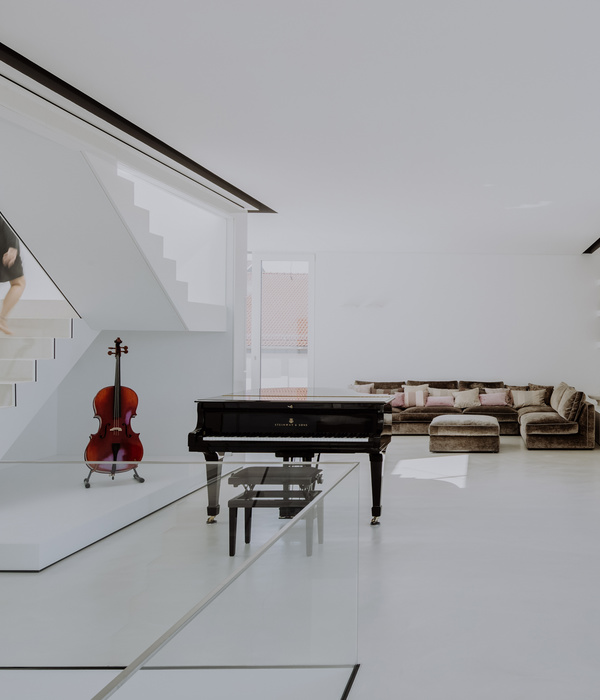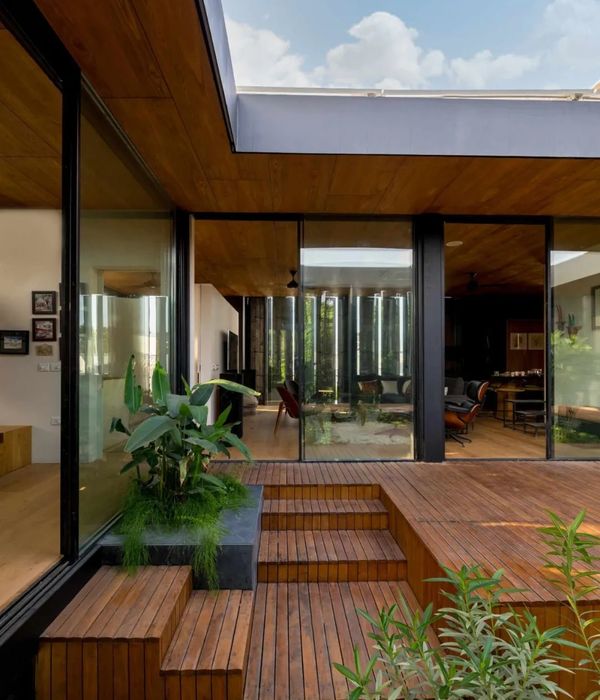- 项目名称:极小天井住宅
- 场地地址:中国上海
- 项目类型:居住建筑改造
- 设计师:Atelier tao +c 西涛设计工作室
- 设计团队:刘涛,蔡春燕,王唯鹿,刘胜丁,韩立慧,王倩娟
- 合作设计团队:J&CO design
- 结构设计:易发安
- 结构加固施工:姜维恭
- 材料:橡木地板,清玻璃,白色涂料,水磨石,白色大理石
- 摄影师:苏圣亮
里弄式住宅是上海独特的地域性居住建筑类型,揉合欧洲联立式住宅和中国南方传统民居的样式,曾是构成老上海的城市肌理的底纹,如今只剩下零星散落,有的经历剧烈改造面目模糊,有的年久失修无法居住。在一个1930年代联立式花园里弄洋房的改造项目中,西涛设计工作室以一种精密微创手术般的处理方式,审视和发掘空间中被过去历次改造所掩盖的特质;通过精准的切割,引入传统江南民居中的天井意象,重整了里弄民居中错层的亭子间和前堂的关系;并探索了建筑本身与院落的关系。
Lane house (or Li long) is a unique residential typology of Shanghai. The urban fabric of the city was once densely constituted of such kind, now only a handful remained. Located in Shanghai French concession area, the project was to remodel such a 1930s’ lane house with a courtyard to accommodate three bedrooms with independent restrooms and facilities meeting the users’ daily needs. With respect to the original site, the design team dealt with a discreet surgical approach, cutting a slim opening in the center of house, reminds one of the typical narrow light shaft in those small southern traditional houses. Carefully preserving and exposing parts of the wooden structure, balancing the relation between old and new. The project evokes a sense of southern Chinese vernacular dwelling with modern architectural language.
▼住宅外貌,exterior view
原建筑是栋三层双开间的里弄住宅,带有一个前院。那个时代常见的木构架加砖墙围护结构,建筑面逐层内退。开间面窄且深,西侧的开间是南北朝向的单一房间;东侧开间分成南北隔离的两格,北面被楼梯间和挤在楼梯转弯处的亭子间占据。这个位置的楼面被分成了四层,只能通过楼梯半平台进入,与主楼面是错层且几乎隔离的关系,更觉狭促。故此空间紧张局促,内部采光不足,是建筑师面对的主要问题,同时还需要满足三间带独立卫生间的卧室和其他生活起居空间的功能要求。在这样一个几无尺寸隙地的条件下,建筑师反其道而行之,通过从建筑内部挖出一个天井而非加建面积的策略去疏通原本紧张的空间关系。
The site is a three-story house supported by the wooden trusses and brick bearing walls which is common during the 30s. The house was divided into two bays, the rooms were narrow and deep. The east side bay had been split into two compartments, the back was occupied by the staircase and the adjacent small rooms which had been dissected into four levels, one can only enter through the semi-platform on the stairs. Therefore, the back rooms are half a level above the frontal rooms, which is a typical trait of a lane house. Our main focus stands upon how to revive this extremely stuffed yet not properly lit old house, and connect the split levels.
▼从建筑内部挖出一个天井,a light well has been made inside the house
在西侧开间的中段,亭子间和主楼面的错层的关节之处,切开一个细长的洞口,从底层的顶面自下而上贯穿三层到屋顶,洞口4:1的长宽比让人回忆起江南小型民居中典型的极小而狭长的天井。洞口用透明和半透明的玻璃围合,形成井形的具象界面,井深且虚。阳光通过折射进入室内的中心,更加柔和;随着自然光的变化,室内的光盒子明暗不定,原本幽暗的内部区域,也因此有了自然光和呼吸,形成了住宅内部的向心性。正如南方民居中的天井不只是采光的作用,设计团队以天井为空间中枢进行四合环绕的平面布局,并使虚的天井成为具有交通性的室内空间部分。
Instead of adding more space, the architects took an opposite approach- cutting a slim opening from ground floor to roof between the split and the main floors in the middle of the east side bay. The 4:1 aspect ratio reminds one of the typical narrow light shaft in those small southern traditional houses. Enclosed with transparent and translucent glass, Sunlight shed into the interior space at the center with a gentle touch. With the move of sunlight, the glass box glows from bright to dim; The light shaft formed the inner concentricity of the house.
▼一层空间,the ground level
▼餐厅,dining room
▼从餐厅望向起居室,view from dining room to the living room
▼从起居室望向餐厅,view from living room to the dining room
▼细长的洞口从底层的顶面自下而上贯穿三层到屋顶,a slim opening from ground floor to roof between the split and the main floors in the middle of the east side bay
在一楼,穿过一片天光从餐厅进入厨房;在二楼,在亭子间的墙上开出一个门洞,通过桥的连接穿过天井,进入起居室,与主空间形成连接和对话;在三楼,阁楼卧房和卫生间隔着光井对望,并通过与天井并行的台阶相连。天井的高度将三层楼从垂直的维度上联系起来;天井的深度,分割又激活水平空间,既透进光的呼吸,又消化了错层之间的落差,连接了原本封闭而断裂的空间关系。横向和纵向两套坐标系统交织形成空间的网格,它们穿插叠合、相互关联,把一个由孤立的小房间组成的房子,串联成一系列的空间交织并形成回响,提供了多重解读和体验的可能,丰富了宅居的空间感受。
On first floor, a bridge penetrates through it and goes into the previously walled attic room, forming a dialogue with the main space. On second floor, the bedroom in the attic looks into the restroom across the light shaft where a few steps linking the two rooms. The height of the shaft vertically synthesizes the three floors, and the depth of it redistributes the forms of space horizontally. By implanting such a light shaft, allows the celebration of air and light and also interweaves the split floors, enriches the spatial experience of domesticity.
▼居住空间围绕天井组织,the living spaces are organized around the light shaft
▼固定的家具亦作为墙体结构而存在,the furniture are also acting as the structure
▼二层洗手间,bathroom on the second floor
▼三层洗手间,the bathroom on the third floor
在用天井形成家的内向性后,建筑师用简单克制的手法处理内部空间的材料。建筑主体结构经过加固补强,谨慎的保留和裸露部分木架结构,形成新旧关系的融合。温暖的木材和白色乳胶漆通过分界线分开。连续性的木板将整个家包裹起来,从最高处的阁楼栏板绵延而下,顺着楼梯间高度起伏转折,体块转化成雕塑般的柜子和墙体,最后在一楼餐厅处敞开,延伸进庭院。在庭院里,同样的体块形成水磨石的花槽,座椅和台阶。餐厅和庭院之间的玻璃门在阳光好的时候打开,室内外的关系融为一个整体。模糊了建筑和室内之间的界面关系,固定的家具亦作为墙体结构而存在。统一而纯粹的材料,让这个家呈现出安静的气氛,一个孤独和温暖的围合。因为风貌区保护的限制,建筑外立面选择了与街区相融合的面砖;设计团队重新梳理了窗户的关系,由室内的布局和景观的关系重新决定开窗的保留或封闭,最终每一个开窗都如同画框,对应外面的风景;每一个房间的光照都能在墙面和地面上创造不同的气氛和效果。
▼木板将整个家包裹起来
a continuous use of wooden plank wrapped up the entire house
The architects employed the material in the interior with restraint. Intentionally preserving and exposing parts of the wooden structure, the designers united the new and old through a series of structural reinforcement. A continuous use of wooden plank wrapped up the entire house from the top attic to the ground floor, following the tortuous thread along the staircase; the planks were transfigured into chests and walls, and the lead spread on the first floor dining room, extending into the yard. The palette of oak and white gives the home a tranquil tone.
▼楼梯间,staircase
▼家装细部,details
▼平面图,plan
▼剖透视,perspective section
项目名称: 极小天井住宅
场地地址: 中国上海
项目类型: 居住建筑改造
设计师: Atelier tao +c 西涛设计工作室
完工日期: aug 2017
占地面积: 165 sqm
建筑面积: 80 sqm
使用面积: 190 sqm
设计团队: 刘涛 / 蔡春燕 / 王唯鹿 / 刘胜丁 / 韩立慧 / 王倩娟
合作设计团队:J&CO design
结构设计:易发安
结构加固施工:姜维恭
建筑及室内改造施工:上海添赐建筑装饰有限公司 王金芳
材料: 橡木地板 / 清玻璃 / 白色涂料 / 水磨石 /白色大理石
摄影师: 苏圣亮
Project Name: the house with a tiny patio
Address: Shanghai, China
Project Type: Residential building – transformation
Designer: Atelier tao+c
Completion Date: aug 2017
Plot area: 80 sqm
Interior area: 190 sqm
Design team: Liu Tao / Cai Chunyan / Wang Wei deer / Liu Sheng Ding / Han Lihui / Wang Qian Juan
Structure engineer: Yi Fa An
Structural reinforcement construction: Jiang Wei Gong
interior renovation construction: Shanghai Tianci Building Decoration Co., Ltd.
material: Oak / Clear glass / White paint / Terrazzo / White marble
Photographer: Su Sheng Liang
{{item.text_origin}}

